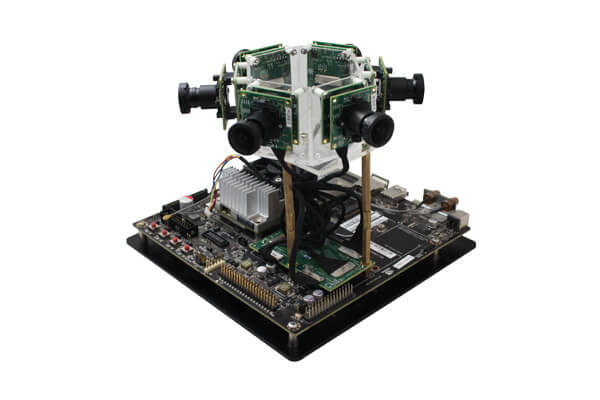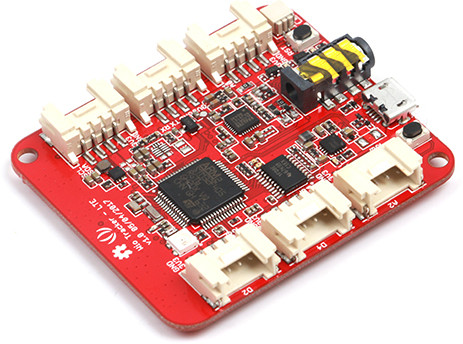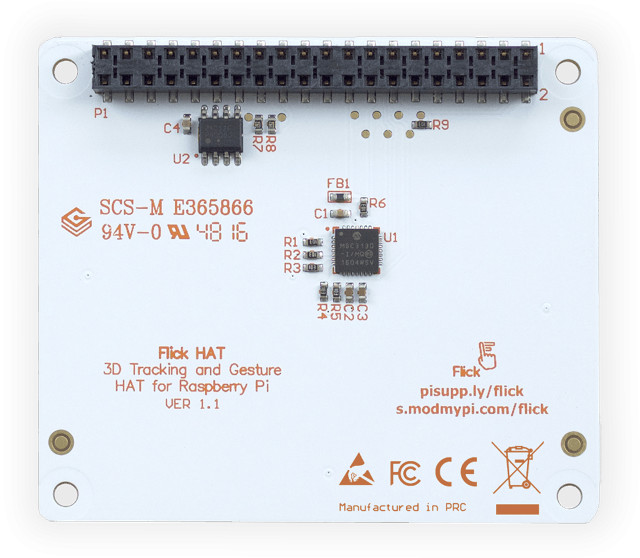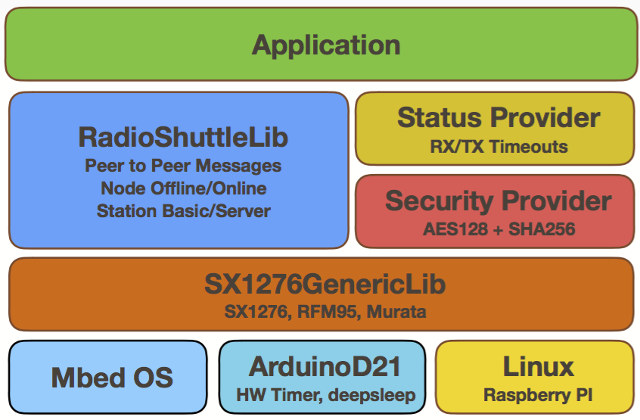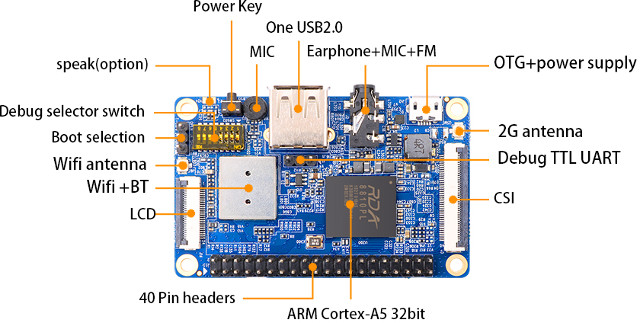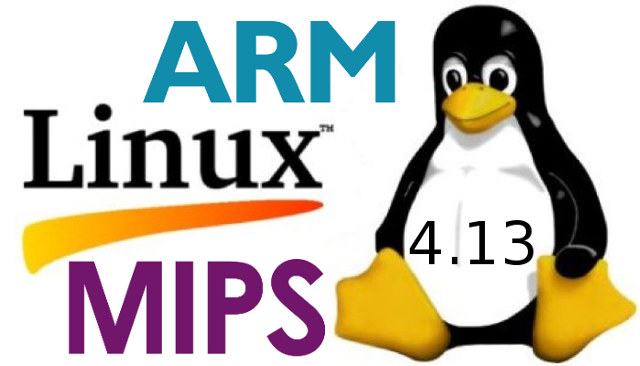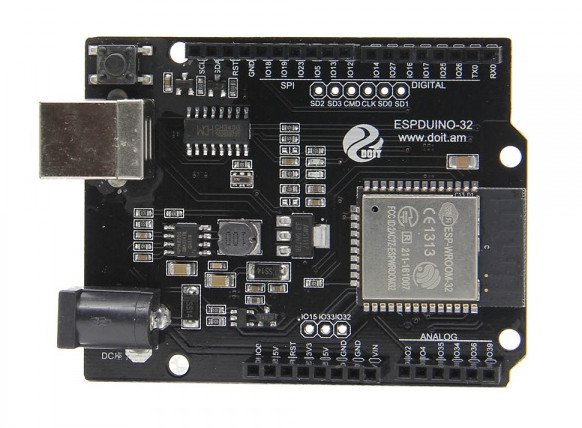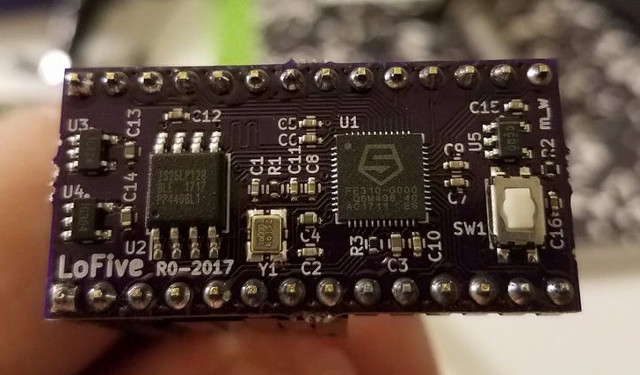e-con Systems has previously launched MIPI cameras for Jetson TX1/TX2 development kit, but the company has now announced e-CAM30_HEXCUTX2, a kit with an adapter board, and six synchronized HD cameras connected that can be used for video surveillance, or robots requiring a 360° or “720°” field of view. The kit is comprised of the following elements: e-CAMHEX_TX2ADAP adapter board for connecting six cameras through Jetson boards’s J22 connector supporting up to 6x 2-lane MIPI CSI-2 cameras 6x 3.4MP MIPI CSI2 low light camera board with interchangeable S-mount lens, and featuring ON Semiconductor AR0330 color CMOS image sensor; each camera supports VGA to 1080p/3M resolution up to 30 fps 6x 30cm custom micro coaxial cable The kit operates at 5V, and requites between 5.33 to 8.10 watts, the later while streaming 6 Cameras on Jetson TX2. Software support is implemented through a Linux camera driver (V4L2) on top of NVIDIA’s JetPack […]
Wio LTE GPS Tracker Board Comes with a 4G Modem, Supports Espruino Firmware (JavaScript Programming)
Seeed Studio launched Wio GPS tracker with a 2G GSM module a few months ago, and while it should work in some countries, others are phasing out 2G networks, and only support 3G or 4G. The company has now launched an update with Wio LTE board with the same form factor, and most of the same features except they replaced the 2G/Bluetooth/GNSS module with a 4G LTE/GNSS module, and Atmel SAMD21 ARM Cortex M0+ microcontroller by an STMicro STM32 ARM Cortex-M4F MCU. Wio LTE board specifications: MCU – STMicro STM32F405RG ARM Cortex M4F MCU @ 168 MHz with 1MB flash, 192+4KB SRAM Storage – micro SD slot Connectivity via Quectel EC21-A (America) module LTE Cat.1 modem: FDD LTE: B2/B4/B12 WCDMA: B2/B4/B5 AT Command: 3GPP TS27.007 and enhanced AT Commands Data – LTE-FDD Max 10Mbps(DL) Max 5Mbps (UL) NanoSIM card 2x u.FL antenna connectors GNSS – GPS/BeiDou/GLONASS/Galileo/QZSS with 1x u.FL GNSS […]
Flick HAT is a 3D Tracking & Gesture Expansion Board for Raspberry Pi Boards
Way back in 2012, I wrote about Microchip MGC3130 3D Gesture Controller with “GestIC technology” which allows you to make gesture up to 15cm from the surface and at lower power in order to control devices in a new way. At the time, the chip was said to sell for $2.26 in large quantities, and the evaluation kits went for $169 and up. I’m writing about MGC3130 about 5 years later, as Seeed Studio has started taking pre-orders for a $25.89 Flick HAT board based on the solution, and designed for Raspberry Pi boards, or other boards with a compatible 40-pin “GPIO” header featuring an I2C interface. Flick HAT 3D Tracking & Gesture HAT specifications & features: Chip – Microchip MGC3130 3D Tracking and Gesture Controller Tracking / Gesture Features 3D tracking Gesture sensing up to 15cm: Swipe (east to west, west to east, north to south, south to north), […]
RadioShuttle Network Protocol is an Efficient, Fast & Secure Alternative to LoRaWAN Protocol
LoRaWAN protocol is one of the most popular LPWAN standards used for the Internet of Things today, but some people found it “lacked efficiency, did not support direct node-to-node communication, and was too costly and far too complicated for many applications”, so they developed their own LoRa wireless protocol software called RadioShuttle, which they claim is “capable of efficiently sending messages in a fast and secure way between simple LoRa modules”. Some of the key features of the protocol include: Support for secure or insecure (less time/energy) message transmission, multiple messages transmission in parallel Unique 32-bit device ID (device number) per LoRa member, unique 16-bit app ID (program number for the communication) Security – Login with SHA-256 encrypt password; AES-128 message encryption Air Traffic Control – Nodes only send if no LoRa signal is active on that channel. Optimized protocol – Message delivery within 110 ms (SF7, 125 kHz, free […]
Orange Pi 2G IoT Board Can Now Boot Linux from NAND Flash
Orange Pi 2G IoT is a $10 development board with a 2G cellular modem that was launched last March. The board is based on RDA Micro RDA8810PL processor designed for cheap Android phones, but Linux support was also promoted, and an RDA8810 Android SDK was released in April. It was the first time RDA8810 was used in a development board, and unsurprisingly it was, and still is, a challenge to use such board, as software support is on-going… So people who purchased the board has troubles with controlling GPIOs, or booting Linux from the SoC’s built-in NAND flash, instead reverting to booting from a micro SD card. Luckily, Orange Pi forum’s user surfero75 worked on the latter, found a solution, and posted instructions in Spanish. He wrote those instructions leveraging the work done by Aib user, and I summarized the main steps below explaining how install and boot from NAND […]
Linux 4.13 Release – Main Changes, ARM & MIPS Architectures
Linus Torvalds has just announced the release of Linux 4.13 and a kidney stone…: So last week was actually somewhat eventful, but not enough to push me to delay 4.13. Most of the changes since rc7 are actually networking fixes, the bulk of them to various drivers. With apologies to the authors of said patches, they don’t look all that interesting (which is definitely exactly what you want just before a release). Details in the appended shortlog. Note that the shortlog below is obviously only since rc7 – the _full_4.13 log is much too big to post and nobody sane would read it. So if you’re interested in all the rest of it, get the git tree and limit the logs to the files you are interested in if you crave details. No, the excitement was largely in the mmu notification layer, where we had a fairly last-minute regression and […]
ESPDUINO-32 & Wemos D1 R32 ESP32 Boards Support (Most) Arduino UNO Shields
The compact ESP32 NodeMCU like board are great for many project, but in case you plan to leverage your existing Arduino shield, it’s more convenient to have a compatible board. We’ve previously seen Noduino Quantum board sold for 99 RMB on Taobao, and $25.90 on AnalogLamb, but doit.am has designed a cheaper model called ESPDUINO-32 that supports shields compatible with Arduino UNO, and sold for $13.73 on DealExtreme. ESPDUINO-32 board specifications: Wireless Module – ESP-WROOM-32 based on Espressif ESP32 dual core Tensilica LX6 processor with 802.11 b/g/n WiFi and Bluetooth 4.2 LE Expansion – Arduino UNO headers with SPI, I2C, digital I/Os, 1x analog input up to 3.2V, 5V, GND USB – 1x USB device port Misc – Button Power Supply – 5 to 12V input via DC jack or Vin pin Dimensions – 66 x 53.3 x 13.5 mm The board can be programmed with the Arduino IDE selecting […]
LoFive is a Tiny Open Source Hardware Board based on SiFive FE310 RISC-V Open SoC
Do you remember HiFive1? It’s an Arduino compatible board based on the SiFive FE310 open source RISC-V SoC. Michael Welling has now started working on LoFive board using the same processor, but in a much smaller & breadboard friendly form factor. LoFive board specifications: MCU – SiFive Freedom E310 (FE310) 32-bit RV32IMAC processor @ up to 320+ MHz (1.61 DMIPS/MHz) Storage – 128-Mbit SPI flash (ISSI IS25LP128) Expansion – 2x 14-pin headers with JTAG, GPIO, PWM, SPI, UART, 5V, 3.3V and GND Misc – 1x reset button, 16 MHz crystal Power Supply – 5V via pin 1 on header; Operating Voltage: 3.3 V and 1.8 V Dimensions – 38 x 18 mm (estimated) The board will be programmable with Arduino IDE + Cinco just like HiFive1 board. The board is also open source hardware, so beside the aforelinked info on Hackster,io, you’ll also find the KiCAD schematics, PCB layout, and […]


